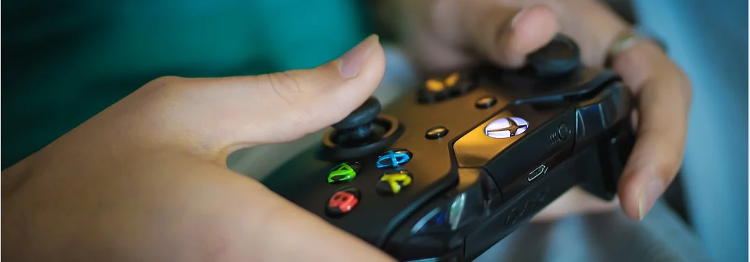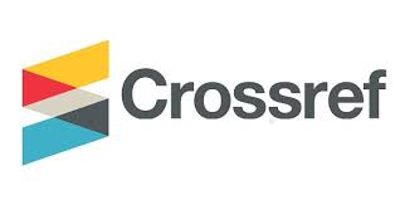- Positive topline results show the Phase 3 RAISE (NCT04115293) zilucoplan trial met primary and all key secondary endpoints in adults with generalised myasthenia gravis
- The results show a favourable safety profile and good tolerability
- UCB plans to proceed with zilucoplan regulatory submissions later this year
- Results follow recent positive topline data from the Phase 3 MycarinG study investigating rozanolixizumab, a monoclonal antibody also being developed by UCB in the same indication
- These results are the latest in a series of positive phase 3 data announcements by the company across its product pipeline
February 04, 2022 – 07:00 CET: UCB, a global biopharmaceutical company, announced positive topline results from the RAISE (NCT04115293) trial1 evaluating its investigational treatment zilucoplan, a self-administered, subcutaneous (SC) peptide inhibitor of complement component 5 (C5 inhibitor), versus placebo in adults with generalised myasthenia gravis (gMG).
The primary endpoint of the trial was met; a clinically meaningful and statistically significant improvement from baseline in Myasthenia Gravis-Activities of Daily Living Profile (MG-ADL) total score at Week 12 was observed for the zilucoplan treatment group vs placebo.
All key secondary endpoints were also met, including statistically significant improvements from baseline in Quantitative Myasthenia Gravis (QMG) score, Myasthenia Gravis Composite (MGC) score and MG-QoL15r score at Week 12 for the zilucoplan treatment group vs placebo.
The results show zilucoplan was well-tolerated and no major unexpected safety findings were identified compared to earlier zilucoplan studies. The incidence of serious treatment emergent adverse events (TEAEs) in the zilucoplan and placebo treatment arms was similar.
The safety and efficacy of zilucoplan have not been established, and it is not approved for use in any indication by any regulatory authority worldwide.
Based on these results, UCB plans to progress with regulatory filings for zilucoplan in gMG in the United States (US), European Union (EU) and Japan, beginning later this year.
“gMG patients can experience varying and debilitating symptoms that impact their everyday lives in unique ways,” said James F. Howard, MD, Distinguished Professor of Neuromuscular Disease, Chief, Neuromuscular Disorders Section, University of North Carolina School of Medicine and lead investigator in the RAISE trial. “These exciting results give us additional reason to believe that zilucoplan can offer an important step forward in addressing the unmet needs of people living with gMG. As we strive to improve the management of this complex and unpredictable disease, any new medicines will be welcomed by physicians to help us realize our goal of offering effective and flexible treatment approaches in gMG which are tailored to the needs of individual patients.”
These findings from RAISE build on the positive results from the Phase 3 MycarinG study evaluating UCB’s investigational treatment rozanolixizumab, an SC-infused monoclonal antibody targeting the neonatal Fc receptor (FcRn) which also met its primary and secondary endpoints with statistical significance in gMG.2
UCB is currently the only company investigating two potential treatments with different mechanisms of action in gMG. Detailed results from both Phase 3 trials will be presented at forthcoming medical meetings in 2022.
While there has been recent progress in the treatment of MG, there is still a significant unmet need for new, effective treatment options that address the unpredictable, fluctuating symptoms of MG – some of which require urgent treatment or hospitalisation – to improve patient outcomes and quality of life. New research into additional treatment options will be welcomed by the global MG community.
Raquel Pardo, Spanish Myasthenia Association (AMES), Spain
Iris Loew-Friedrich, Executive Vice-President and Chief Medical Officer added: “This is the latest in a series of positive Phase 3 data announcements across UCB’s product pipeline validating our patient value strategy and laying foundations for future sustainable growth. Today’s results represent another significant milestone in UCB’s efforts to bring transformational outcomes to those living with myasthenia gravis. Positive results for zilucoplan and rozanolixizumab – each with a different mechanism of action – bring us one step closer to achieving our ambition of delivering choice and flexibility for a broad range of patients and physicians at each step of their treatment journey, addressing significant unmet needs and offering unique patient value. We thank the MG community for their continued insights, partnership and participation in this study.”
About Generalized Myasthenia Gravis (gMG)
Myasthenia gravis is a rare disease impacting almost 200,000 patients in the U.S., EU and Japan. , People living with gMG can experience a variety of symptoms, including drooping eyelids, double vision and difficulty swallowing, chewing and talking, as well as severe life- threatening weakness of the muscles of respiration.5-8
gMG is a chronic and unpredictable auto-immune disease in which pathogenic autoantibodies can inhibit synaptic transmission at the neuro-muscular junction by targeting specific proteins on the post-synaptic membrane. This disrupts the ability of the nerves to stimulate the muscle and results in a weaker contraction. gMG can occur at any age and in any race, although previous studies have shown that women are more often impacted than men.9 Complement activation, a key mediator of antibody function, is recognized as an important driver of pathology in gMG.
About the zilucoplan RAISE study10,11
The RAISE study (Safety, Tolerability, and Efficacy of Zilucoplan in Subjects With Generalized Myasthenia Gravis (NCT04115293)) is a multi-center, Phase 3, randomized, double-blind, placebo-controlled study to evaluate the efficacy, safety, and tolerability of zilucoplan in adult patients with gMG.
Patients were randomised in a 1:1 ratio to receive daily subcutaneous (SC) doses of zilucoplan or placebo for 12 weeks. The study was designed to determine if complete complement inhibition can bring clinical benefit to people with gMG and if complement inhibition was effective across a broad spectrum of patients with acetylcholine receptor antibody positive (AChR Ab+) MG regardless of disease duration, prior treatment or response to previous therapies.
The primary endpoint for RAISE study is change from baseline at Week 12 in the Myasthenia Gravis-Activities of Daily Living (MG-ADL) score, an eight-item patient-reported scale developed to assess MG symptoms and their effects on daily activities. Secondary endpoints include change in the Quantitative Myasthenia Gravis (QMG) score, the Myasthenia Gravis Composite (MGC) and the Myasthenia Gravis Quality of Life 15 revised (MG-QoL15r) from baseline to Week 12; time to rescue therapy; the percentage with minimum symptom expression (MSE) (defined as MG-ADL of 0 or 1), the percentage with a ≥3-point reduction in MG-ADL and the percentage with a ≥5-point reduction in QMG, all measured at Week 12.
For more information about the trial visit https://clinicaltrials.gov/ct2/show/NCT04115293.
About the rozanolixizumab MycarinG study12
The MycarinG study (NCT03971422) is a completed multi-center, Phase 3, randomized, double-blind, placebo-controlled study evaluating the efficacy and safety of rozanolixizumab in adult patients with gMG, with an open-label extension.
The primary endpoint for the MycarinG study is change in the Myasthenia Gravis-Activities of Daily Living Profile (MG-ADL) score. Secondary endpoints include response rates, changes in the Myasthenia Gravis Composite (MGC) score, the Quantitative MG (QMG) score, patient-reported outcomes and adverse events (AEs).
A preliminary analysis of results shows the trial met its primary endpoint, demonstrating a statistically significant and clinically meaningful change from baseline in the MG-ADL total score at Day 43. All secondary endpoints were also met with statistical significance. Overall, rozanolixizumab was well tolerated and no new safety signals were identified.13
For more information about the trial, visit https://clinicaltrials.gov/ct2/show/NCT03971422.
About Zilucoplan11,14
Zilucoplan targets complement component 5 (C5), a component of the terminal complement activation pathway, and binds to C5 with high affinity and specificity. This prevents its cleavage by C5 convertases into the complement components C5a and C5b. In addition, zilucoplan is understood to bind to the domain of C5 that corresponds to C5b and thereby block binding of C5b to complement component C6.
Inhibition of C5 cleavage prevents the downstream assembly and activity of membrane attack complex (MAC). This dual mechanism of action of zilucoplan has the potential to prevent activation of the terminal complement pathway and downstream assembly and activity of MAC that can damage and destroy the postsynaptic membrane, disrupt ionic channel conductance and impair neuromuscular transmission.
Zilucoplan is being investigated in the RAISE study, a multi-center, Phase 3, randomized, double-blind, placebo-controlled study to evaluate the efficacy, safety, and tolerability of zilucoplan in subjects with gMG.
Further indications that are potentially addressable by zilucoplan include amyotrophic lateral sclerosis (ALS) and other tissue-based complement-mediated disorders with high unmet medical need.
Zilucoplan was selected as one of the first drugs to be tested in a multi-center ALS platform study sponsored by the Sean M. Healey & AMG Center for ALS at Massachusetts General Hospital, Boston, MA.
The safety and efficacy of zilucoplan have not been established and it is not currently approved for use in any indication by any regulatory authority worldwide.
About Rozanolixizumab
Rozanolixizumab is a subcutaneously infused humanized monoclonal antibody that specifically binds, with high affinity, to human neonatal Fc receptor (FcRn). It has been designed to block the interaction of FcRn and Immunoglobulin G (IgG), accelerating the catabolism of antibodies and reducing the concentration of pathogenic IgG autoantibodies.15,16
Rozanolixizumab is under clinical development with the aim of improving the lives of people with pathogenic IgG-autoantibody-driven autoimmune diseases, including gMG, primary immune thrombocytopenia (ITP), myelin oligodendrocyte glycoprotein antibody-associated disease (MOG-AD) and autoimmune encephalitis (AIE) by driving removal of pathogenic IgG autoantibodies.
The safety and efficacy of rozanolixizumab have not been established and it is not approved for use in any indication by any regulatory authority worldwide.
References
- Data on file. UCB. February 2022.
- UCB Press Release, December 10. 2021 https://www.ucb.com/stories-media/Press-Releases/article/UCB-announces-positive-Phase-3-results-for-rozanolixizumab-in-generalized-myasthenia-gravis Accessed February 2022
- Chen J, et al. Incidence, mortality, and economic burden of myasthenia gravis in China: A nationwide population-based study. Lancet Reg Health West Pac.2020;5:10063.
- Gilhus N. Myasthenia Gravis. N Engl J Med. 2016;375:2570-2581.
- Lisak, RP. Best Practice Myasthenia gravis. BMJ Best Practice. 2021. Last accessed December 2021
- Robertson NP, et al. Myasthenia gravis: a population based epidemiological study in Cambridgeshire, England. J Neurol Neurosurg Psychiatry. 1998;65:492-496.
- Kupersmith MJ et al. Development of generalized disease at 2 years in patients with ocular myasthenia gravis. Arch Neurol. 2003;60(2):243-248.
- Hansen JS, et al. Mortality in myasthenia gravis: A nationwide population-based follow-up study in Denmark. Muscle Nerve. 2016;53:73-77.
- Myasthenia Gravis Foundation of America. Clinical Overview of MG. https://myasthenia.org/Professionals/Clinical-Overview-of-MG. Accessed November 2021.
- Clinical Trials.gov ‘Safety, Tolerability, and Efficacy of Zilucoplan in Subjects With Generalized Myasthenia Gravis (RAISE)’: https://clinicaltrials.gov/ct2/show/NCT04115293. Accessed November 2021.
- Howard JF, Jr., et al. JAMA Neurol 2020;77:582–92.
- Clinical Trials.gov ‘A Study to Test Efficacy and Safety of Rozanolixizumab in Adult Patients With Generalized Myasthenia Gravis’: https://clinicaltrials.gov/ct2/show/NCT03971422. Accessed February 2022.
- Data on file. UCB. December 2021
- Ricardo A, et al. Blood 2015;126:939.
- Kiessling P, et al. The FcRn inhibitor rozanolixizumab reduces human serum IgG concentration: A randomized phase 1 study. Sci Transl Med. 2017;9(414).eaan1208
- Smith B, et al. Generation and characterization of a high affinity anti-human FcRn antibody, rozanolixizumab, and the effects of different molecular formats on the reduction of plasma IgG concentration. MAbs.2018;10:1111-30.






